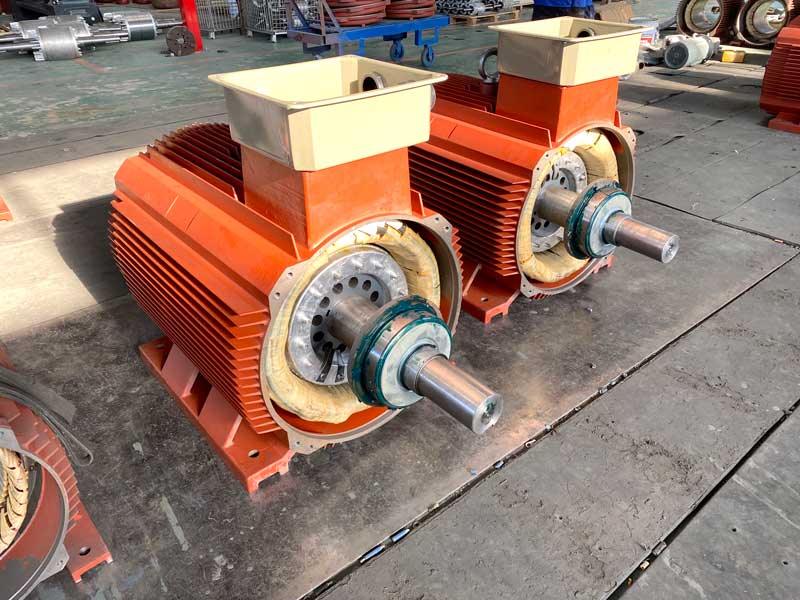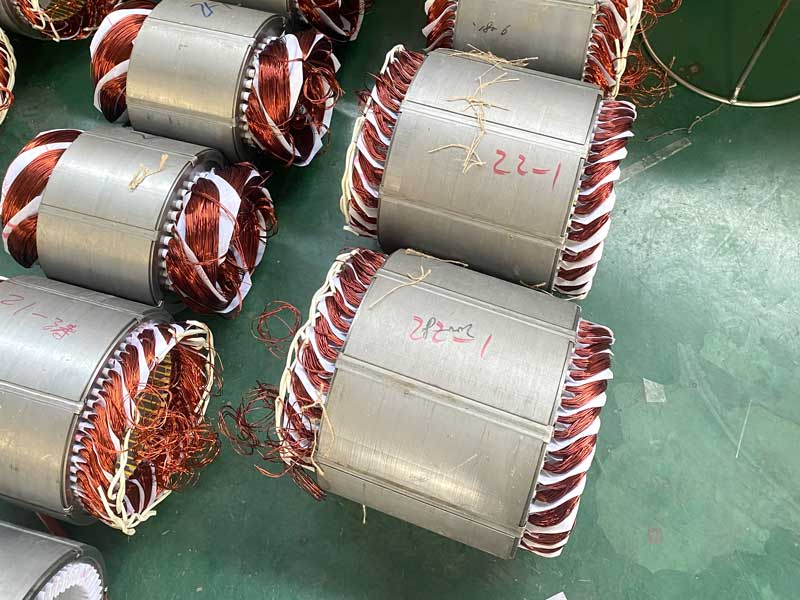What is the difference between a variable frequency motor and a regular motor?
Variable frequency motor, also known as variable frequency speed control motor, controls the motor through a frequency converter. In fact, besides being a variable frequency motor itself, three-phase asynchronous motors can also achieve variable frequency function within the school range by adding a frequency converter. Its characteristic is that it can adjust the frequency and speed according to the load.
For example, in areas with low voltage, a variable frequency motor can be used to reduce the frequency and ensure reliable starting of the motor; In places with lighter loads, variable frequency motors can be used to reduce frequency, in order to achieve the goal of reducing current and speed, thereby saving energy.

The characteristic of a regular motor is that it can rotate as soon as it is powered on, and it will stop rotating when it is powered off. However, its rotation and stop cannot be immediately reflected, and it cannot be regulated. Its speed can only be slowed down through a reducer.
Variable frequency motors and ordinary motors each have their own advantages. For example, variable frequency motors can achieve variable frequency effects while starting, and can be applied to a wide range of operating frequencies. Therefore, their advantages have been recognized by the public and are also products with a high market share.
However, they increase the electromagnetic load, making the magnetic circuit less prone to saturation; The structure of ordinary motors is simple and easy to maintain, and they are also more affordable than variable frequency motors in terms of price. However, they may burn out due to overheating during use.
What is the difference between a variable frequency motor and a regular motor
1. Different heat dissipation conditions: Ordinary motors and heat dissipation fans use the same circuit, while variable frequency motors and heat dissipation fans use separate circuits. When the frequency of a regular motor is too low, it may burn out due to high temperature. Ordinary motors are designed according to the frequency and corresponding power of the mains power, and can only operate under rated conditions, while variable frequency motors need to overcome high temperatures and vibrations at low frequencies, so variable frequency motors are better designed than ordinary motors.
2. Different insulation levels: Variable frequency motors need to withstand high-frequency electromagnetic fields, so their insulation level is higher than that of ordinary motors. Under normal circumstances, a frequency converter cannot be applied to ordinary motors. However, in actual operation, in order to save costs, ordinary motors are used instead of frequency converters when speed regulation is required. However, the speed regulation accuracy of ordinary motors is not very high.
3. Different service life: The service life of variable frequency motors is usually longer than that of ordinary motors. When a regular motor is running, its carrier frequency can reach several thousand to tens of kilohertz, and the stator winding will be subjected to high voltage, just like applying a steep impulse voltage to it, which will require the inter turn insulation of the regular motor to undergo more brutal experience. Variable frequency motors can operate under the voltage of rectification and filtering circuits, resulting in more stable performance and longer service life.
In which occasions should a variable frequency motor be selected
1. Working frequency>60HZ, the mechanical strength and bearings of ordinary three-phase asynchronous motors are generally unable to handle it.
2. The working frequency is less than 30HZ, the load is large and it needs to work continuously for a long time. Ordinary three-phase asynchronous motors cannot meet the heat dissipation needs of the motor by relying on the internal fan blades, and the motor will overheat severely, which is particularly easy to damage the motor.
3. The speed regulation ratio between the electric motor and the dragged load is D ≥ 10 and the working strip frequently changes (D=Nmax/Nmin).
4. The speed regulation ratio D is relatively large, the working cycle is short, and the moment of inertia GD2 is also large. The forward and reverse switching operation requires the implementation of energy feedback braking.
5. When it is more suitable to use a variable frequency motor for transmission needs, a variable frequency motor should be selected.

Variable frequency motor has the following characteristics
1. The heat dissipation of the tail motor is driven by an independent constant speed micro motor, and the air volume of the radiator is constant, independent of the speed of the variable frequency motor.
2. The mechanical strength of the design of the variable frequency motor can ensure the maximum speed use of the motor, and it is safe and reliable for the long term.
3. The dynamic frequency range of magnetic circuit design is large, which can adapt to both the highest and lowest operating frequencies.
4. The insulation structure designed is much higher than that of ordinary three-phase asynchronous motors, and can better withstand high temperatures and higher impulse voltages.
5. During high-speed operation, the noise, vibration, and losses generated are not higher than those of ordinary three-phase asynchronous motors of the same specifications and models.




